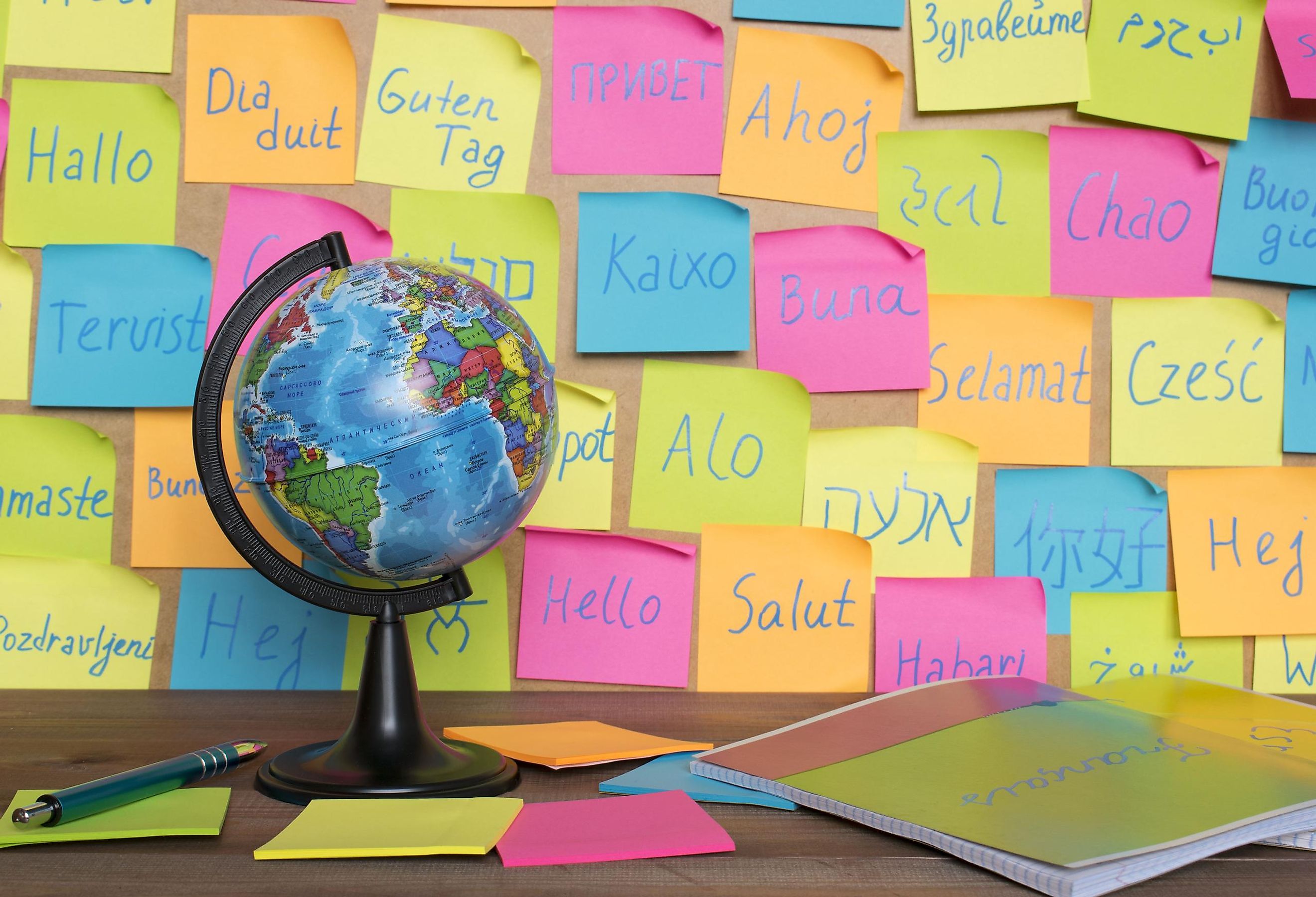
The 10 Most Spoken Languages In The World
At the heart of human self-expression is the language that each person grows up with, as well as the languages one encounters over time in this world. Billions of people have grown comfortable with the ability to communicate with countless peers, which is only a feat made possible through widespread education and agreement on linguistic rules. The existence of dialects in each language proves that standardization is an impossible goal. However, it is remarkable that the following ten languages manage to be mutually intelligible across continents and long stretches of history. This stability is a fleeting occurrence in human history, so for the time being, brush up on our planet's most popular languages.
1. English – 1.5 Billion Speakers

A few factors explain why English is one of the most common global languages used for business and academics worldwide. Simple grammar structures, specifically conjugation and gender, allow new speakers the opportunity to pick it up rapidly. For eastern countries, its status as not only widely used but neutral enables political neighbors to converse without feeling one region takes precedence over the other. Moreover, English was aided in its spread by the British colonization of the last several hundred years. Only a few differences exist between American English and British English, but speakers of each dialect pick a favorite and adamantly defend that choice.
2. Mandarin Chinese – 1.1 Billion Speakers
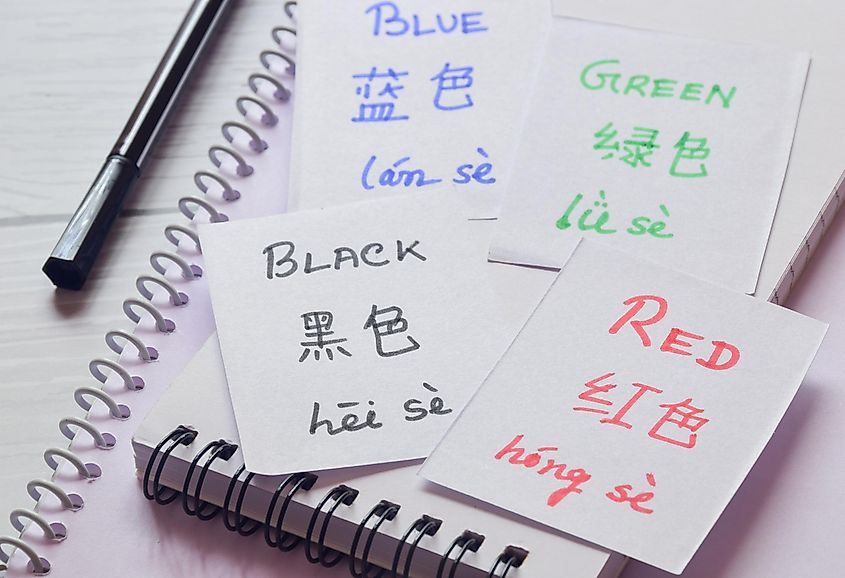
A massive country with a wealth of historical roots, mainland China harbors between 7 and 10 language groups, and the most dominant is called Mandarin. Eighty percent of the population uses this variant, which has been adopted into both English and Chinese alphabets. If you examine a typical Chinese keyboard, each key has an abundance of symbols that allow typists to access the alphabet they desire. Mandarin originated primarily in North China during the Ming Dynasty (1368-1644), and due to the difficulty, it is suggested that children begin learning the language at a young age to acquire a native accent. Over 50 thousand characters exist in the alphabet, but less than half are typically used, and barely 3 thousand are essential to read most media.
3. Hindi – 602 Million Speakers
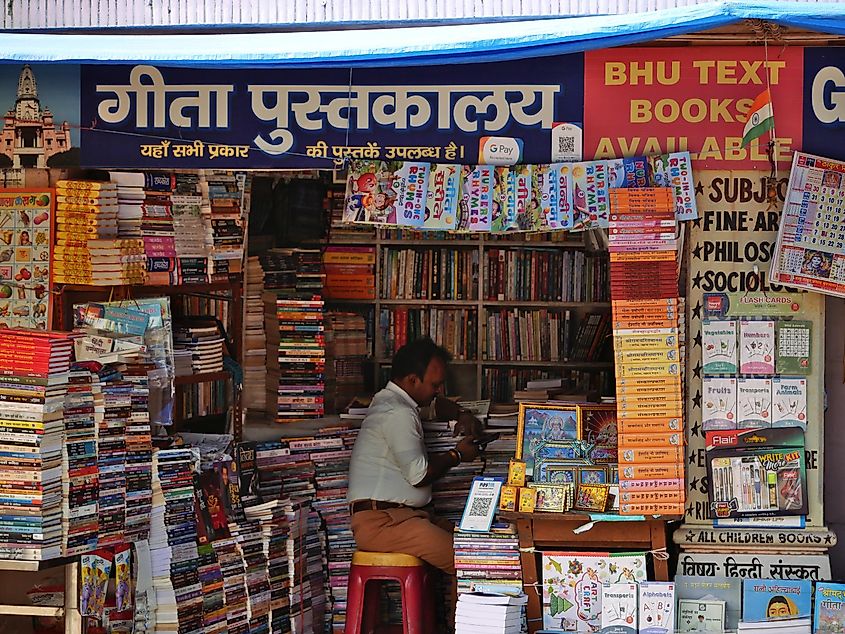
The primary language of India, Hindi originates from the ancient language of Sanskrit, and similarities between the typography are obvious. One hundred twenty-one languages can be found in the populated country of India, but more than half of the population can speak Hindi. Other influences on the language, over time, have included Persian, Arabic, Turkish, and even Portuguese and English. Therefore, it is considered an Indo-European language. The name comes from Mahavir Prasad Dwivedi, an Indian writer from the late 19th century, and the writer Bharatendu Harishchandra also played an integral part in the systemization of the language. These two educated and talented men understood that an accessible language would aid communication and empower citizens of all demographics in India.
4. Spanish – 548 Million Speakers
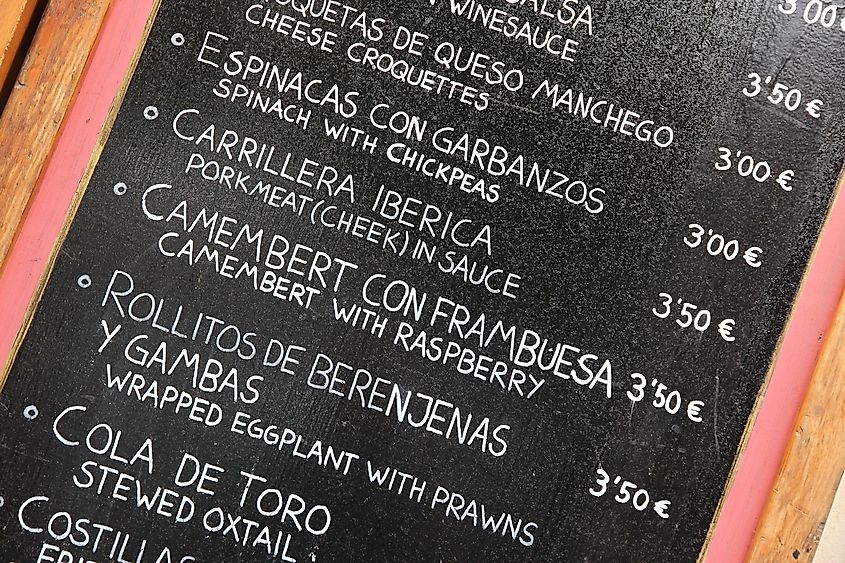
Another colonizing force, Spain's influence on the globe carried with it the impact of their native language. Over 360 million people use it as a first language, and many countries throughout the Caribbean and Americas consider it their official language, such as Mexico and Costa Rica. It is also spoken in Africa. Several variants exist, with some dialects taking heavy influence from medieval occupiers who spoke Arabic, and Latin American Spanish has a handful of differences from Spain's Castilian Spanish. The language is derived from Vulgar Latin, alongside French and Italian, so it is typical for a speaker of one to readily acquire the other two.
5. French – 274.1 Million Speakers

Known as the language of love by some and the language of tongue-twisters by others, French is a product of the merging of Latin and Celtic languages. The first texts written in a recognizable French script appeared around 842, although like English, it took many evolutions to inherit the form it has today. For instance, the word 'forest' in English has kept the /s/ and /t/ consonants, whereas the translated sister word 'forêt' in French is pronounced like the English word 'foray.' This transition of pronunciation happened around the 14th century, where Old French was replaced with Middle French. Like any major language, especially ones that were globalized through colonization, attempts at standardization also slow the rate at which the language evolves into the unrecognizable territory.
6. Arabic – 274 Million Speakers
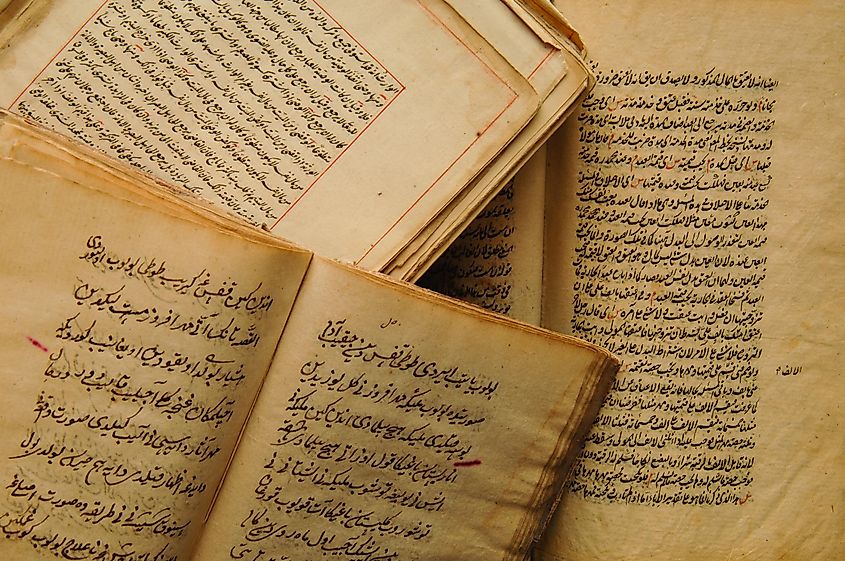
Over a thousand years ago, and particularly highlighted in the Quran, Arabic originated in the Arabian Peninsula, where various nomadic groups spoke it. The language has expanded across the world alongside Islamic conquests in the regions of North Africa and the Mediterranean. Arabic is a consonant-heavy language that trips up learners with a background solely in English, a more vowel-centric language. Often described as 'throaty' because of sounds that are produced in the back of the mouth, Arabic also utilizes a gorgeous albeit complicated alphabet. Words are formed from individual phonetic symbols that weave together as if written in cursive. Diacritic accents point to differences in pronunciation. There are many dialects of Arabic, but academic elites have toiled to preserve the religious Arabic format that is used in writing, as it is inspired by the Quran.
7. Bengali – 272 Million Speakers
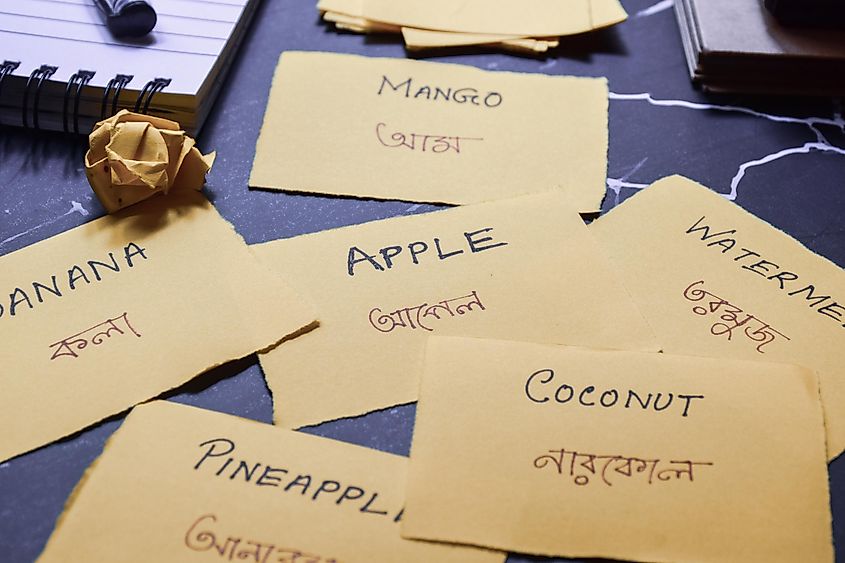
Bangladesh and the West Bengal state in eastern India are the strongest bastions of this language which is also spoken in other countries where Bengalis have emigrated. The language is also Indo-European, like Hindi, with connections to Sanskrit. Interestingly, the language is gender-neutral, and it also harbors over 100 thousand unique words. The confusion begins when learners realize a very small mark can entirely change the meaning of a word, but patience is necessary for all new skills and languages.
8. Russian – 258 Million Speakers
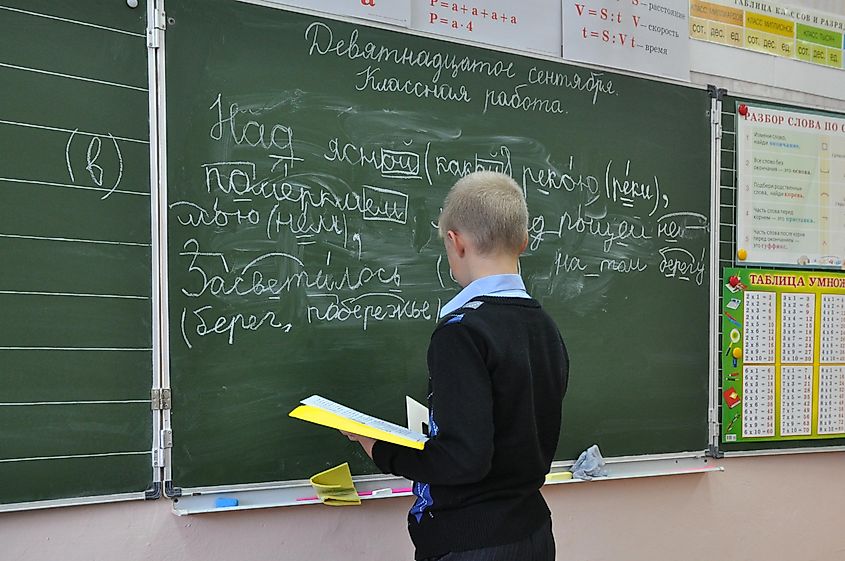
Centuries of expansion and administration have bound the people of the Russian landmass together. This is no small feat considering the 6.6 million square miles that make up the country. The language itself is Slavic and shares similarities with Ukrainian, Belarusian, and even Polish. The intermingling and Russian army occupations that occurred in the last few centuries certainly solidified those bonds. The symbols of the language are from the Cyrillic alphabet, which is based on the Greek alphabet, hinting at a tie to the predominance of the Eastern Orthodox religion in Russia. Although it is one of the most difficult languages to learn, Russian has a quality and sound to it that make it truly unique whenever it is heard by foreign listeners.
9. Portuguese – 257.7 Million Speakers

A romance language spoken between Portugal and its former colony, Brazil, Portuguese is also heard in places throughout Spain and the Azores Islands. Moreover, large populations of speakers live in several countries in Africa as well as the United States. It is a poetic language that scholars and creatives settled on around 1200 AD, although a split happened between Portuguese and its Galician roots. There are some differences between the way Brazilian speakers use the language, both phonetically and grammatically, but overall, Portuguese is also considered similar enough to Spanish for two people of those backgrounds to be capable of having a conversation.
10. Urdu – 231 Million Speakers

As an Indo-Aryan language, Urdu is primarily spoken in Pakistan and India. Large communities also exist in the United States, the United Arab Emirates, and the United Kingdom. As the official language of Pakistan, Urdu was also heavily influenced by Turkish, Arabic, and Persian, despite the origins being in North India throughout the Delhi region over 900 years ago. Several English words have been borrowed from Urdu, such as Khaki, Pashmina, Pajamas, and Typhoon. A sophisticated and poetic language, it is no wonder that Urdu is one of the most spoken languages on the planet.
Each of these ten languages reveals something unique about the people that speak them. Historical and cultural values, through expression and proverbs, are typically shared over thousands of years in language. Speakers today are drawing from a wealth of knowledge and experience that extends far into the past. In a hundred years, given the ever-fluctuating nature of humankind, the top ten spoken languages of the world could be a very different collection. For now, we are grateful for how these languages have enriched the people and cultures within and around the speakers who have carried on the linguistic traditions.











